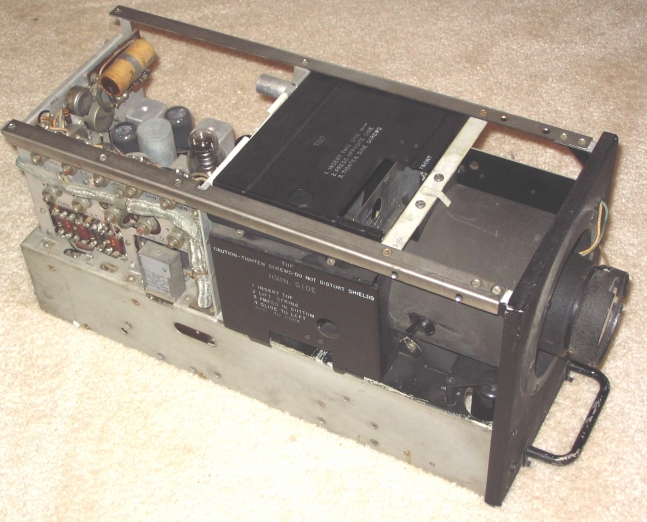|
Military television got its start during World War
II. In 1934, on learning of the newly-formed Japanese
Kamikaze Corps, Vladimir Zworykin of RCA proposed that the
American answer to that potentially devastating tactic could
be to use television and radio control to acheive the same
results. The Navy led the way in the field of military
television, with RCA as the prime civilian contractor.

|
| Airborne Television Camera
CRV-59AAE |
This TV camera uses an 1846 iconoscope pickup tube.
One of the applications of the Block system was its use
for remote control of war-weary bombers that were turned into
flying bombs. After conventional bombing attacks on
hardened targets in Europe failed, Project Aphrodite sought to
direct remote-controlled flying bombs into the small
vulnerable areas of V-bomb launching sites and sub pens.
After take-off and arming by a crew of two aviators, the
flying bomb would be controlled from another plane.
Joseph P. Kennedy Jr., the elder brother of President Kennedy,
was killed in the process of sending a PB4Y(Navy version of
B-24) on its way towards a target.
The system was used more successfully in the Pacific
Theatre.
Click here to read more
about WWII television equipment.
Click here to read about
my grandfather's career at RCA, where he worked on television,
military, and medical electronics |